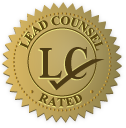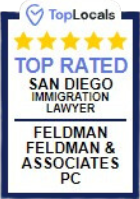The E-3 Visa: An Employment Visa For Australians Only
Created in 2005 in conjunction with the Australian-United States Free Trade Agreement, the E-3 employment visa is similar to the H-1B visa in many ways, though it is only available to Australian citizens.
The E-3 visa allows the holder to work temporarily in a specialty occupation while living in the United States. The visa must be renewed every two years, though the employee may renew the visa indefinitely. This visa is a non-immigrant visa, meaning that those who hold the visa are not directly on the path to permanent residency and should not have the intent of living in the United States permanently.
E-3 Work Visa Requirements
The E-3 visa has a number of requirements besides Australian residency:
- You must be employed in a specialty occupation. In other words, you must hold at least a Bachelor’s degree or equivalent in your field. Also the E-3 petitioner (the employer) must require at least a Bachelor’s degree or equivalent for the position.
- You must have an employer sponsor. While you are in the United States with your E-3 visa, you may only work for the sponsoring employer.
- The employer sponsor must pay document filing costs and meet a number of requirements, including proving that hiring the Australian worker will not harm similar American workers.
- You must plan to stay in the United States temporarily, not permanently.
E-3 Visa and H-1B Visa Comparison
The E-3 visa is similar to an H-1B visa in many regards, although there are several key differences.
Advantages of the E-3 Visa:
- The E-3 visa may be renewed indefinitely in two-year increments. H-1B visas have a six-year maximum unless the permanent residency process has been started.
- E-3 visa applicants may apply directly at the consulate. The process avoids USCIS and potentially lengthy delays. It also avoids the $1225 fee for premium processing.
-
- The E-3 visa is more affordable. Employers save $1250 or $2000 in government processing fees than those who apply for the H-1B visa as the E-3 visa is not subject to the H-1B’s $500 fraud fee or the H-1B training fees (either $750 or $1500 depending on the size of the company).
- There is greater E-3 visa availability. The E-3 visa has an annual quota of 10,500. This quota has never been met. The annual cap of 65,000 H-1B visas always runs out and the cap is often exceeded during the first week that the visas become available.
- The spouse of an E-3 visa holder may obtain an open market work permit. This work permit does not have the restrictions that many other similar permits have. In addition, the E-3 visa holder’s spouse does not have to be an Australian citizen.
Disadvantages of the E-3 Visa:
- The E-3 visa must be renewed every 2 years. An H-1B visa lasts for three years between renewals.
- The E-3 visa does not allow for dual intent. An E-3 visa holder must indicate that they intend to remain in the U.S. temporarily, while an H-1B visa allows dual intent. If the E-3 visa holder starts the permanent residency process, he or she is indicating a permanent intent and this could result in denial of subsequent reentry after leaving the U.S. It may be best for E-3 visa holders to switch over to an H-1B or another visa that does recognize dual intent before starting the permanent residency process.
E-3 Visa Assistance at Feldman & Feldman
The E-3 category is a wonderful option for qualified individuals from Australia with offers of employment in the United States. At Feldman Feldman & Associates, we can assist you with all aspects of your United States work visa, whether you are considering an E-3 visa, an H-1B visa, or another type of visa. To learn more about your visa options, or simply to speak with an experienced immigration attorney, call our offices today.






